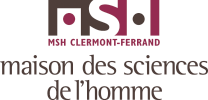CITADEL 2 - Conservation des sites fortifiés calcaires du patrimoine mondial
>>
CITADEL 2 - Conservation des sites fortifiés calcaires du patrimoine mondial
Disciplines : Archéologie, Histoire de l'art, Géographie, Géomatique, Géologie, Physique, Biologie, Sciences de la conservation
Mots-clés : Erosion accélérée, Changement global, Patrimoine, Calcaire
Durée de l'opération : 2015
Financement : MSH
Porteurs scientifiques :
- Marie-Françoise André (GEOLAB)
- Bruno Phalip (CHEC)
Résumé
Le programme interdisciplinaire CITADEL vise à renforcer les synergies à l’œuvre au sein de la MSH de Clermont-Ferrand entre les géographes physiciens spécialistes de l’érosion de la pierre (GEOLAB), les historiens de l’art et archéologues spécialistes du patrimoine architectural (CHEC), et les géomaticiens investis dans la modélisation 3D (MSH-plateforme IntelEspace). Ce programme est conduit en lien avec deux autres MSH (MOM Lyon et MAE Nanterre) et deux laboratoires clermontois de géosciences et biosciences (M & V et LMGE).
Il s’inscrit dans un courant de recherche international sur l’identification des causes de la détérioration accélérée du patrimoine architectural et l’amélioration des stratégies de conservation des monuments historiques. L’objectif du programme CITADEL est de tester l’hypothèse de l’implication des interventions humaines sur les monuments, notamment celle de l’introduction dans le bâti, lors des opérations de conservation et de restauration, de matériaux incompatibles aux effets délétères. Les recherches portent sur deux secteurs d’étude : Chypre (sites de Famagouste et Salamine) et Israël (forteresse de Belvoir). Parallèlement, la valorisation internationale des résultats acquis lors de la première phase du programme à Malte et au Yucatan se poursuit.
Summary
The CITADEL interdisciplinary project aims to reinforce the research collaborations developed in recent years at the MSH of Clermont-Ferrand between the physical geographers analysing stone decay processes (GEOLAB), the art historians and archaeologists involved in the study of architectural heritage (CHEC), and the geomaticians working with 3D modelling (MSH-IntelEspace platform). This project will be conducted through a partnership with members of two other MSH (MOM Lyon and MAE Nanterre) and two laboratories of Clermont-Ferrand specialised in geosciences and biosciences (M & V and LMGE). It is part of an international and multidisciplinary effort to understand the origins of the accelerated decay of the architectural heritage and to improve conservation strategies of historical monuments. The objective of the CITADEL project is to test the hypothesis of the implication of human interventions on monuments during conservation and restoration operations, especially the introduction of incompatible materials which are suspected to have deleterious consequences. The research will be conducted in 2015 in two field areas: CYPRUS (Famagusta and Salamis) and Israel (Belvoir Fortress). The international valorisation of results obtained in 2013-14 in Malta and Yucatan will be continued.
Laboratoires et services de la MSH associés au projet
Autres partenaires
- LMV - Laboratoire Magmas et Volcans
- LMGE - Laboratoire Microorganismes : Génome et Environnement
- HADES Archéologie
- ARAR - Laboratoire Archéologie et Archéométrie, de la MSH MOM - Lyon
- ARCHAM - Laboratoire Archéologie des Amériques de la MAE - Nanterre
- INAH Mexique - Instituto Nacional de Antropologia e Historia
- IAA Israël - Israel Antiquities Authority
- Université d'Anvers
- LBW-Bioconsult All.
Contacts :
- Marie-Françoise André (GEOLAB) : m-francoise.andre@univ-bpclermont.fr
- Bruno Phalip (CHEC) : Bruno.PHALIP@univ-bpclermont.fr




